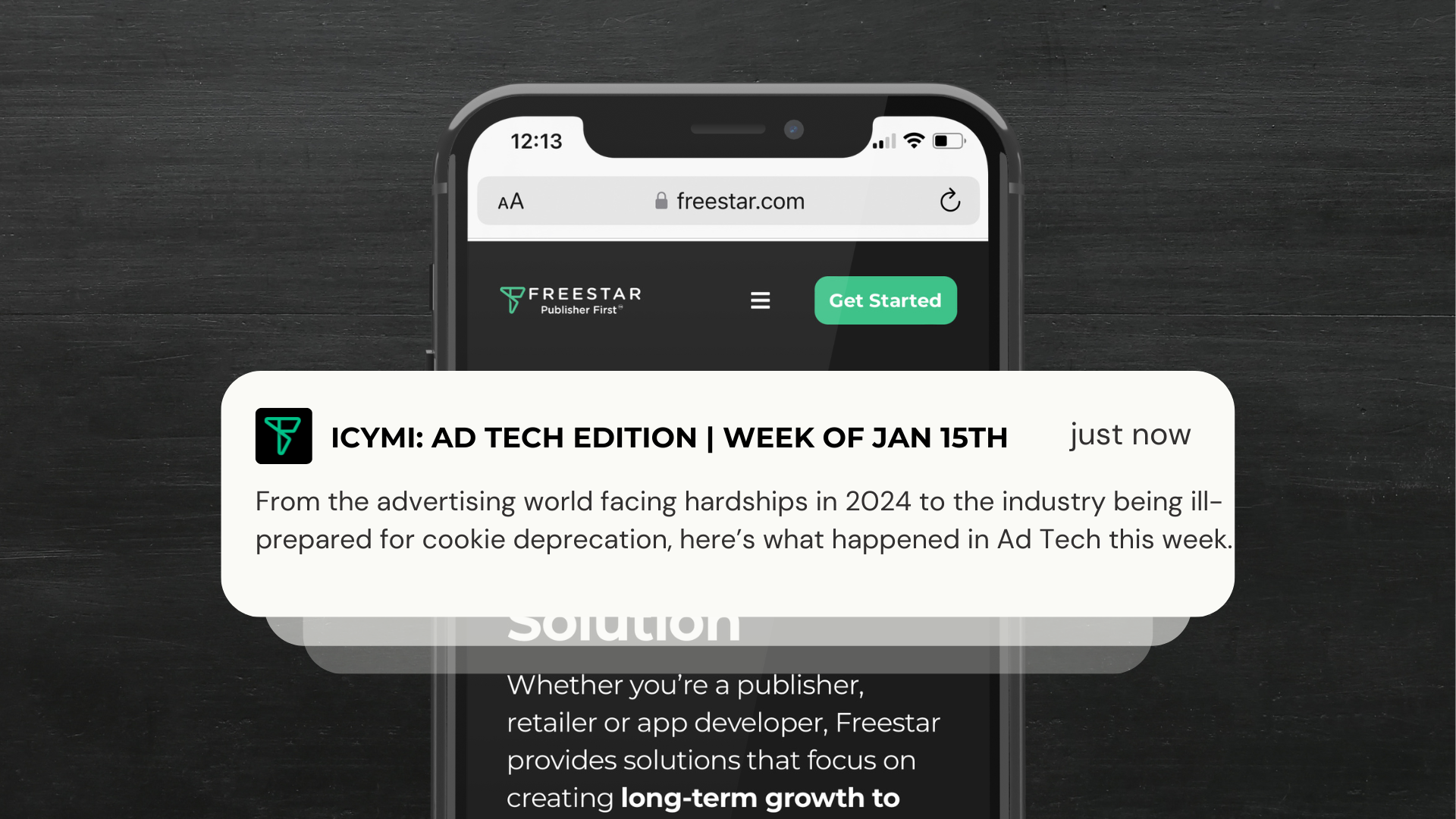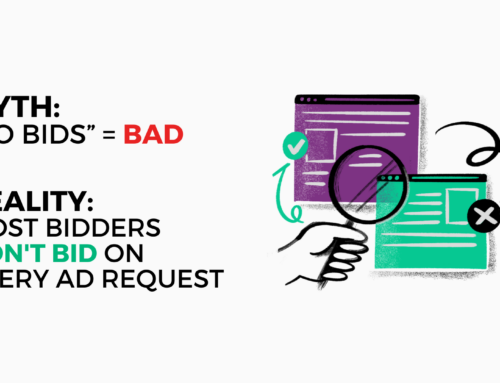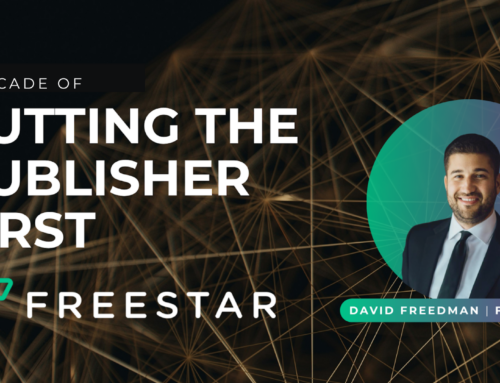Bits and Bobs from around the industry:
- The Precipice of Peril: Publishers And Ad Tech Face A Harsh 2024
- Indeed is launching a bunch of specialized ad networks to grab a bigger piece of the $36 billion companies spend on advertising jobs
- THE PRIVACY SANDBOX DEBATE; INDUSTRY LACKS PREP FOR COOKIE DEPRECATION; OPENAI V. NYT SAGA; CES PRODUCTS
The Precipice of Peril: Publishers And Ad Tech Face A Harsh 2024
In 2024, the digital advertising landscape will face significant challenges, surpassing the turbulence experienced in 2023. Key trends to watch include:
1. Traffic Woes for Publishers: Publishers, grappling with declining referral traffic, face challenges due to AI separating search from sources and the diminishing newsfeed. The cookie deprecation, stringent regulations, and increasing ad tech costs will add to their burdens. Long-form content may gain prominence, while vertical publishing remains vulnerable to AI.
2. DCaaS (Deal Curation as a Service): Publishers will turn to “curation houses” to navigate the complexities of the open market. Trusted curation houses with direct buyer relationships and clear value propositions will emerge, addressing the historical issues of custom solutions’ high costs and buyer apathy.
3. Bid Enrichment Challenges: Bid enrichment, traditionally an internal DSP/SSP service, is moving to publisher pages. However, concerns about bid washing, fee structures, misrepresentation, and ID laundering arise. The mechanics of bid enrichment deals, often structured as “lift deals,” need reevaluation to ensure transparency and fair compensation.
4. CTV Addressability Paradox: Ad-supported streaming’s surge leads to an overflow of undifferentiated supply, prompting inventory owners to opt for addressable auctions. However, the increased ad tech presence may force downward adjustments of floor prices, challenging the need for inventory reservation and potentially eroding CPMs.
5. Attention Metrics Dilemma: Attention as a value metric introduces complexity, favoring buyers and potentially reducing publisher payouts. The measurement problem compounds as pre-impression and post-impression filters drive up costs, leading to incomplete correlations of performance and attention.
6. PAAPI’s Impact on Adsense: As Chrome deprecates cookies, the Protected Audiences API (PAAPI) emerges to handle privacy-safe retargeting. Google brands supporting PAAPI may impact non-Google SSPs, potentially shrinking their demand. The adoption of PAAPI auctions could reshape the DSP landscape and impact client-side multi-bidder auction dynamics.
7. Standalone DMP Challenges: Standalone Data Management Platforms (DMPs) face challenges in monetizing their data. Increased competition from adjacent vendors and the rise of contextual solutions at a fraction of the cost threaten the standalone DMP proposition, although the impending cookie collapse could bring them back into focus.
8. LoMP (Loss of Media Productivity) Concerns: The ANA Programmatic Media Supply Chain Transparency Study highlights the full “cost waterfall” of transaction costs and Loss of Media Productivity (LoMP). DSPs and SSPs may focus on reducing LoMP with new features, potentially charging for these solutions, leading to a flight to quality and strengthening of seller relationships.
Despite the challenges, 2024 could still be a great year, urging industry players to focus on strengthening consumer relationships amid the changes and uncertainties.
Indeed is launching a bunch of specialized ad networks to grab a bigger piece of the $36 billion companies spend on advertising jobs
Indeed, a popular job website, is expanding its advertising tools to assist companies in reaching potential employees across the internet. In addition to running search ads on Indeed’s website, companies can now utilize ad networks to place display ads on specific publishers’ websites, targeting niche pools of job candidates. The first such ad network is the Tech Network, designed for tech workers, and includes 50 tech websites with a claimed reach of over 500 million monthly visits. This move allows companies to get hard-to-fill and competitive job listings in front of a broader audience, ultimately aiming to increase the number of qualified applicants.
The Tech Network, which features publishers like The Next Web and Stack Overflow, redirects job seekers who click on the ads to Indeed’s website for the application process. Indeed plans to launch similar ad networks for healthcare and transportation professionals and is testing targeting capabilities for these ads. This strategy responds to the current trend where tech layoffs from major companies like Google prompt tech employees to explore job opportunities beyond traditional career websites, seeking roles on platforms they already frequent.
The ad networks leverage artificial intelligence (AI) to identify the most suitable publishers for potential job seekers. Indeed’s approach involves capping the number of publishers in the ad network to ensure more targeted outreach. The platform aims to differentiate itself from competitors like LinkedIn by emphasizing AI-driven targeting and limiting the number of publishers to focus on specific groups. This move comes as companies globally spent $36 billion on advertising online jobs in 2022, according to a report from Staffing Industry Analysts. Despite facing competition from LinkedIn, Indeed hopes its targeted approach will help companies connect with the right candidates more effectively.
THE PRIVACY SANDBOX DEBATE; INDUSTRY LACKS PREP FOR COOKIE DEPRECATION; OPENAI V. NYT SAGA; CES PRODUCTS
Google’s Privacy Sandbox initiative, particularly Chrome’s Tracking Protection feature, has sparked a divisive debate in the ad tech industry. The Trade Desk has chosen not to participate, criticizing Google’s self-serving motives and asserting that sandbox solutions are inadequate. However, results shared by Paul Bannister, Chief Strategy Officer at Raptive, indicate that the Privacy Sandbox is not at a full 1% deprecation yet. Cookieless Chrome users are monetizing about 30% worse than those with cookies, and Chrome iOS users outperform Safari iOS users by 15%, despite being identically unaddressable.
Additionally, a report highlights that many big brands are not adequately prepared for cookie deprecation. Adlook surveyed nearly 200 consumer packaged goods (CPG) companies, revealing that over half (55%) are still exploring options or just starting to consider them. Less than half (45%) are making major revisions to their data collection and usage patterns. Concerns and skepticism about the impact of cookie deprecation on ad targeting were expressed by 38% of respondents.
In the realm of AI and media, OpenAI responds to The New York Times’ lawsuit, emphasizing its collaboration with news organizations and asserting that training its chatbot on published material falls under fair use. The lawsuit revolves around the concept of “regurgitation,” where generative AI may memorize data and reproduce it rather than creating new text. OpenAI claims this phenomenon is rare, while The New York Times argues otherwise.
CES (Consumer Electronics Show) featured several noteworthy advertising products. NBCUniversal’s One Platform introduced the Total Audience platform, emphasizing cross-platform, audience-based advertising. Hulu presented shoppable ads with The Gateway Shop, focusing on commerce within streaming platforms. Monks.Flow showcased an AI suite for marketers, offering a platform-agnostic environment with synthetic media, workflow optimization, and business intelligence capabilities.






